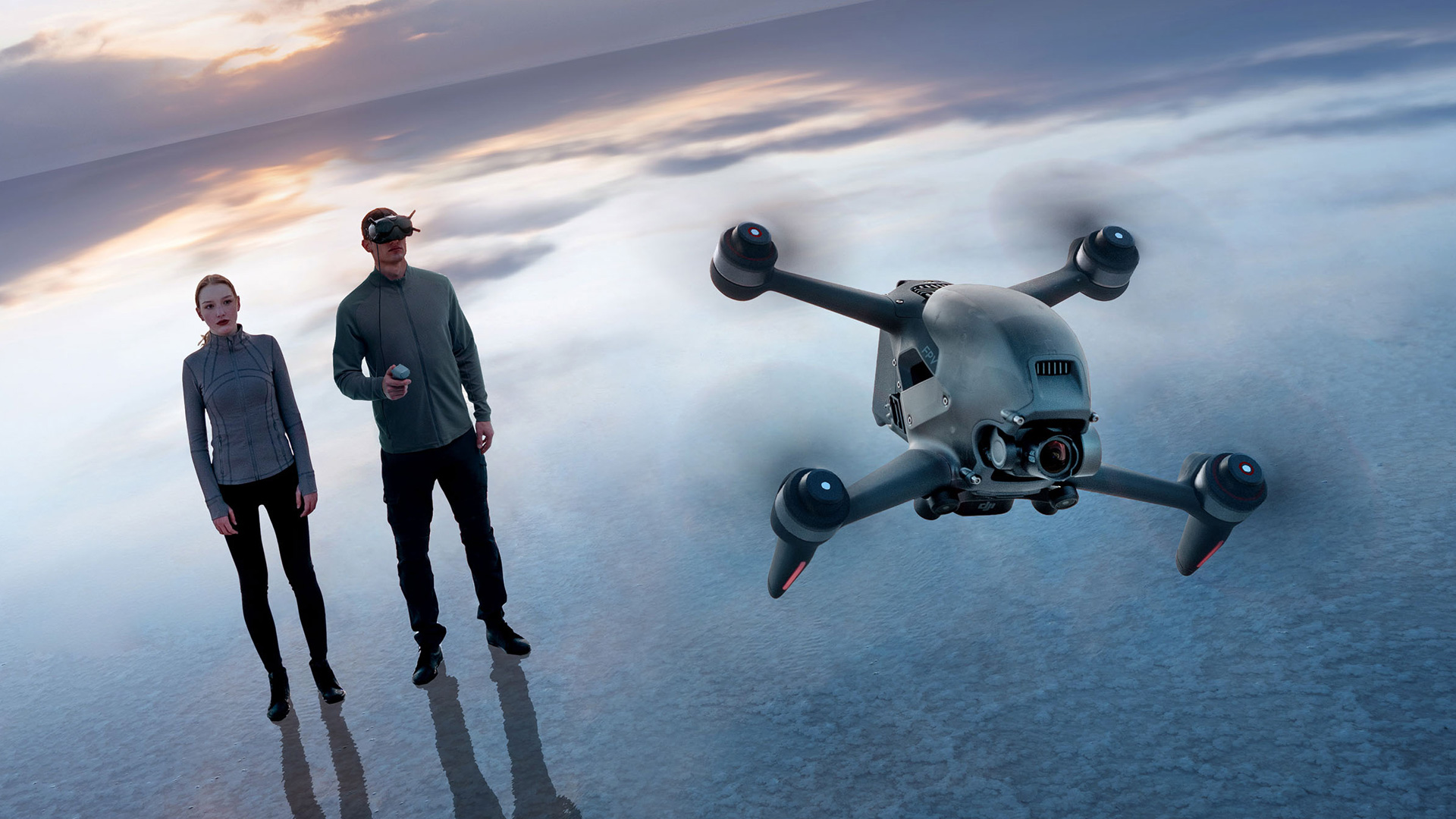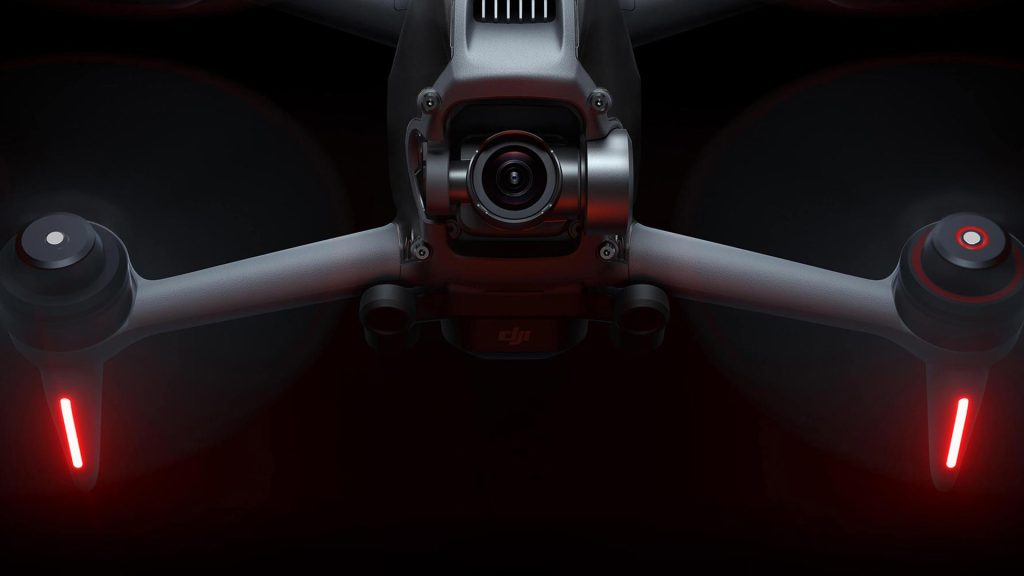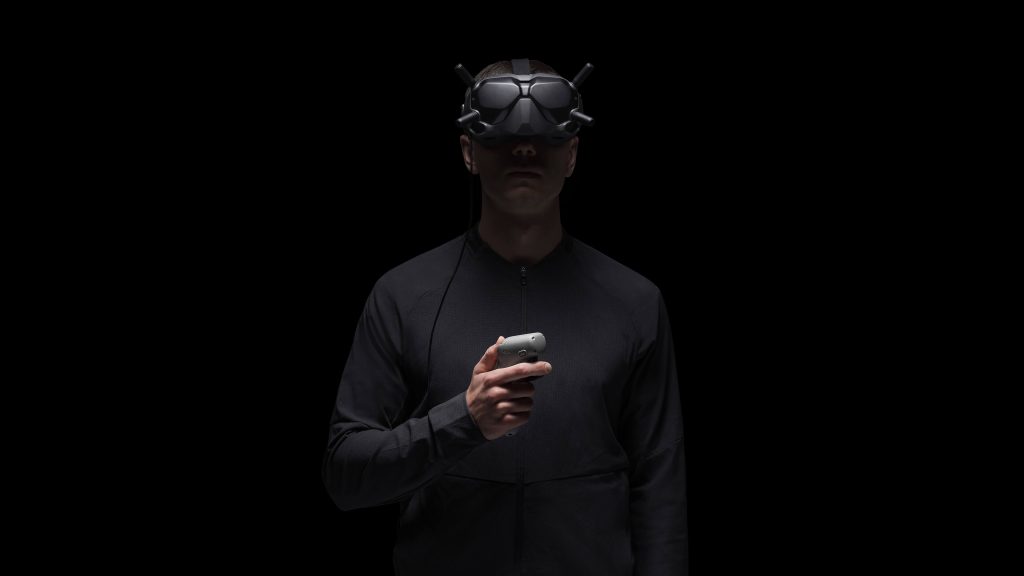
The DJI FPV drone is the world's first beginner-friendly technology-filled drone for first-person view flight and the ultimate thrill-seeker's dream. In this review, we will go through the features of the DJI FPV drone, from its design to camera performance to discuss whether or not it's worth the splurge.

The DJI FPV drone is a ready-to-fly, 4K equipped FPV racing drone that is perfect for beginners. It has a sophisticated design, unlike other FPV drones that require building by hand, and contains safety features such as a smart return-to-home feature, low-battery warning, and forward and downward obstacle sensors. The drone itself is built with high-quality materials, giving it a solid and durable feel. The weight of the drone contributes to its stability in flight, making it easy to control even for beginners.

One of the standout features of the DJI FPV drone is the goggles. The DJI goggles are adjustable, light, and incredibly sharp, providing an ultra-wide 150-degree field of view to give the flyer full confidence when flying through tight, tricky spaces like forests and abandoned properties. The quality of the visuals is pristine and makes for an impressive immersive experience, almost like strapping yourself to the nose of an aircraft. The goggles also have built-in head tracking, which allows the user to control the camera movement simply by moving their head, adding to the overall immersive experience. The goggles are comfortable to wear, with adjustable straps and padding to ensure a snug fit for various head sizes.

The DJI FPV ships with a hand controller that is powerful and familiar to current DJI drone owners. It has a few different buttons on the back that you'll need to acquaint yourself with, including a rocker switch that changes the flight modes from normal to sport and manual. The controller feels comfortable in hand, with a good grip and responsive controls. The buttons are well-placed and intuitive, allowing for easy access to various functions while in flight. The controller also has a built-in screen that displays important flight information, such as battery life and GPS signal strength.
Additionally, there is an optional Motion Controller that lets you control the drone using hand movements alone, although it requires practice. The Motion Controller adds a new level of interaction with the drone, allowing for a more intuitive flying experience. The Motion Controller is lightweight and easy to hold, with sensors that accurately detect hand movements to control the drone's flight path. While it may take some time to get used to flying with the Motion Controller, it adds an extra element of fun and excitement to the flying experience.
The DJI FPV combo is a more complex procedure than most DJI consumer drones but way easier than other FPV on the market. This setup is designed to work in harmony to get you up and flying almost immediately, and an image comes on the screen once the drone's built-in GPS system detects enough satellites. The setup process involves connecting the drone to the goggles and hand controller, calibrating the sensors, and ensuring that all systems are ready for flight. While it may take a bit longer to set up compared to other drones, the process is straightforward and well-documented in the user manual. Once the setup is complete, the drone is ready to take off and explore the sky.

The DJI FPV's camera is mounted to a two-axis gimbal that keeps images stable no matter how shaky the drone may be in flight. It can record video up to 4K resolution and take aerial photographs. The image quality is outstanding, with vibrant colors and sharp details. The gimbal's stabilization technology ensures that the footage remains smooth, even during high-speed maneuvers and turns. However, the gimbal's lack of a horizontal axis means that when the drone banks to the left or right, the image follows suit. While this can be a bit disorienting at first, it adds to the immersive experience of flying in first-person view. The camera also has a wide-angle lens, allowing for a greater field of view when capturing footage or photos.
The DJI FPV drone has three main flying modes: Normal, Sport, and Manual. Normal mode is the beginner-friendly dialled down mode that is perfect for a smooth flight experience with no surprises. In Normal mode, the drone's speed is limited, and the controls are more forgiving, allowing beginners to get a feel for flying without the risk of crashing. This mode is great for practicing basic maneuvers and getting comfortable with the controls.
Sport mode is faster and more agile, with quicker turn capabilities. In Sport mode, the drone's speed restrictions are lifted, allowing for more thrilling and dynamic flights. The responsiveness of the controls is increased, making it easier to perform tight turns and maneuvers. Sport mode is great for experienced pilots or those looking for an adrenaline rush.
Manual mode is designed for full-fledged FPV racing, with an eye-watering top speed of 86mph. In Manual mode, all of the drone's built-in safety functions are disabled, giving the pilot complete control over the flight. This mode is recommended for experienced FPV pilots who are familiar with the nuances of flying in first-person view. The speed and agility of the DJI FPV in Manual mode make it an exciting choice for those looking for a competitive racing experience.
One of the standout features of the DJI FPV drone is its flight performance. The drone is incredibly fast and agile, allowing for thrilling and dynamic flights. The acceleration is impressive, and the drone can reach top speeds in a matter of seconds. The controls are responsive and precise, allowing for precise maneuvers and turns. The drone's stability and smoothness in flight are remarkable, even during high-speed flights or windy conditions. The DJI FPV also has excellent battery life, allowing for longer flight times and extended exploration of the surroundings.
While the DJI FPV drone is a highly accomplished introduction to the immersive thrills of FPV flying, there are a few downsides to consider. The main problem is its expense. The drone's price of £1,249 is reasonable for a high-quality drone package, considering its advanced features and capabilities. However, FPV flying can be risky, and crashes are inevitable, especially for beginners. Repairing or replacing damaged parts can be costly, adding to the total cost of ownership. It is important to factor in the potential repair and maintenance costs when considering purchasing the DJI FPV.
Another consideration is the need for a spotter and observer when flying the DJI FPV. FPV flying requires a spotter to maintain visual contact with the drone and ensure that it doesn't fly closer than 50m to people, buildings, and cars. This is to ensure the safety of others and comply with local regulations. Finding a reliable spotter or joining a flying club is essential for enjoying the full FPV experience with the DJI FPV drone.
In conclusion, the DJI FPV drone is suitable for enthusiasts seeking immersive and thrilling FPV flying experiences. Its sleek design, high-quality camera, and excellent flight performance make it a standout option in the FPV drone market. The inclusion of safety features such as obstacle sensors and a smart return-to-home feature adds an extra layer of confidence for beginners. However, it is important to consider the cost of ownership, including potential repair and maintenance costs, before investing in the DJI FPV. Additionally, adherence to local regulations regarding FPV flying is crucial to ensure the safety of others and avoid any legal issues. With the right precautions and knowledge, the DJI FPV drone can provide an exhilarating and unforgettable flying experience.
Share your moments and explore the perfect mix of modern luxury business and lifestyle stories.
Every alternate week get a packaged update from the world of luxury. A newsletter tastefully curated by the luxurylifestyle.ae
Every alternate week get a packaged update from the world of luxury. A newsletter tastefully curated by the luxurylifestyle.ae